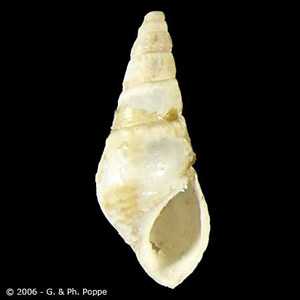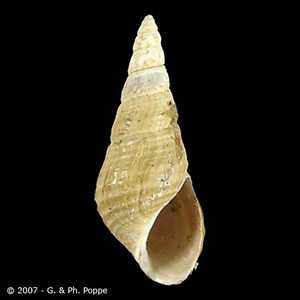
Metagonimiasis
[Metagonimus yokogawai]
Causal Agents
Metagonimus yokogawai, a minute intestinal fluke (and the smallest human fluke).
Life Cycle

Adults release fully embryonated eggs each with a fully-developed miracidium, and eggs are passed in the host’s feces  . After ingestion by a suitable snail (first intermediate host), the eggs hatch and release miracidia which penetrate the snail’s intestine
. After ingestion by a suitable snail (first intermediate host), the eggs hatch and release miracidia which penetrate the snail’s intestine  . Snails of the genus Semisulcospira are the most frequent intermediate host for Metagonimus yokogawai. The miracidia undergo several developmental stages in the snail, i.e. sporocysts
. Snails of the genus Semisulcospira are the most frequent intermediate host for Metagonimus yokogawai. The miracidia undergo several developmental stages in the snail, i.e. sporocysts  , rediae
, rediae  , and cercariae
, and cercariae  . Many cercariae are produced from each redia. The cercariae are released from the snail
. Many cercariae are produced from each redia. The cercariae are released from the snail  and encyst as metacercariae in the tissues of a suitable fresh/brackish water fish (second intermediate host)
and encyst as metacercariae in the tissues of a suitable fresh/brackish water fish (second intermediate host)  . The definitive host becomes infected by ingesting undercooked or salted fish containing metacercariae
. The definitive host becomes infected by ingesting undercooked or salted fish containing metacercariae  . After ingestion, the metacercariae excyst, attach to the mucosa of the small intestine
. After ingestion, the metacercariae excyst, attach to the mucosa of the small intestine  and mature into adults (measuring 1.0 mm to 2.5 mm by 0.4 mm to 0.75 mm)
and mature into adults (measuring 1.0 mm to 2.5 mm by 0.4 mm to 0.75 mm)  . In addition to humans, fish-eating mammals (e.g., cats and dogs) and birds can also be infected by M. yokogawai
. In addition to humans, fish-eating mammals (e.g., cats and dogs) and birds can also be infected by M. yokogawai  .
.
Geographic Distribution
Mostly the Far East, as well as Siberia, Manchuria, the Balkan states, Israel, and Spain.
Clinical Presentation
The main symptoms are diarrhea and colicky abdominal pain. Migration of the eggs to extraintestinal sites (heart, brain) can occur, with resulting symptoms.
Metagonimus yokogawai, adult fluke.

Figure A: Adult M. yokogawai, stained with carmine. In this figure, the following structures are labeled: oral sucker (OS), pharynx (PH), intestine (IN), genitoacetabulum (GA), ovary (OV), the large, paired testes (TE), and eggs within the uterus (EG).
Snail intermediate hosts of M. yokogawai.

Figure A: Snail in the genus, Semisulcospira. Image courtesy of Conchology, Inc, Mactan Island, Philippines.

Figure B: Snail in the genus, Semisulcospira. Image courtesy of Conchology, Inc, Mactan Island, Philippines.
Laboratory Diagnosis
The diagnosis is based on the microscopic identification of eggs in the stool. However, the eggs are indistinguishable from those of Heterophyes heterophyes and resemble those of Clonorchis and Opisthorchis. Specific diagnosis is based on identification of the adult fluke evacuated after antihelminthic therapy, or found at autopsy.
Treatment Information
*Praziquantel 75mg/kg/day divided into 3 doses for 1 day (adult and pediatric dose are the same). Praziquantel should be taken with liquids during a meal.
*Not FDA approved for this indication.
DPDx is an education resource designed for health professionals and laboratory scientists. For an overview including prevention and control visit www.cdc.gov/parasites/.
- Page last reviewed: May 3, 2016
- Page last updated: May 3, 2016
- Content source:
- Global Health – Division of Parasitic Diseases and Malaria
- Notice: Linking to a non-federal site does not constitute an endorsement by HHS, CDC or any of its employees of the sponsors or the information and products presented on the site.
- Maintained By:


 ShareCompartir
ShareCompartir